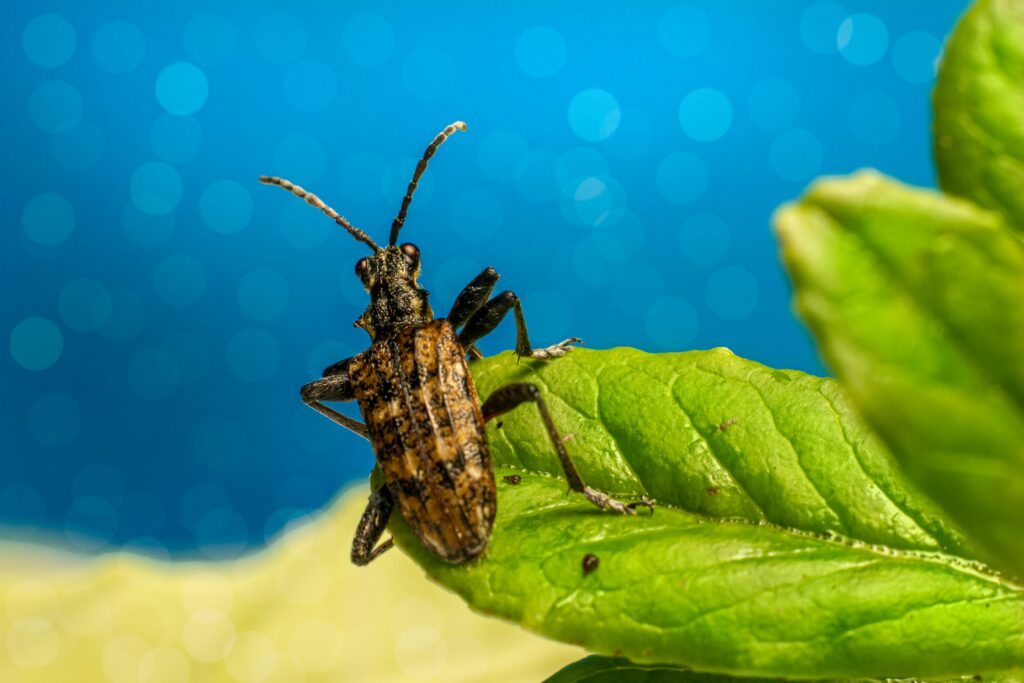Indoor plants bring nature’s beauty into our homes, transforming spaces with lush greenery and often improving air quality. However, these botanical roommates rarely come alone. Within the soil, along stems, and under leaves lives a miniature ecosystem of insects and other tiny creatures. Many plant enthusiasts react with immediate concern upon spotting movement among their houseplants, but the relationship between plants and insects is complex. Some creepy crawlies spell disaster for your beloved flora, while others actually benefit plant health. Understanding which insects help and which harm your houseplants can make the difference between a thriving indoor garden and a struggling collection. Let’s explore the fascinating world of houseplant insects and determine which are friends worthy of protection and which are foes requiring intervention.
The Hidden Ecosystem Within Your Home
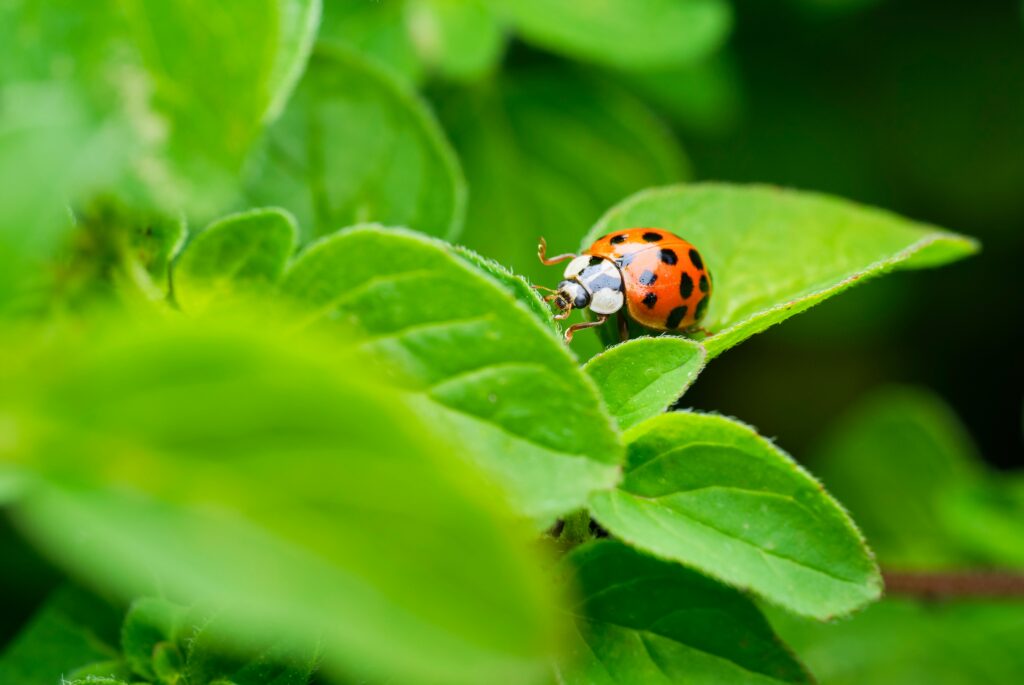
Houseplants create miniature ecosystems that often go unnoticed until something seems amiss. Even the cleanest homes harbor microscopic life forms, with potted plants serving as particularly attractive habitats for various insects. The warm, controlled environment of our homes provides ideal conditions for certain insects to thrive year-round, unlike outdoor conditions where seasonal changes might limit their populations. This hidden ecosystem includes beneficial decomposers that break down organic matter in soil, pollinators that may help flowering houseplants, predatory insects that control pest populations, and unfortunately, destructive pests that feed on plant tissues. Understanding this delicate balance is crucial for maintaining healthy plants without resorting to potentially harmful chemical interventions unnecessarily.
Common Beneficial Insects: Nature’s Gardeners
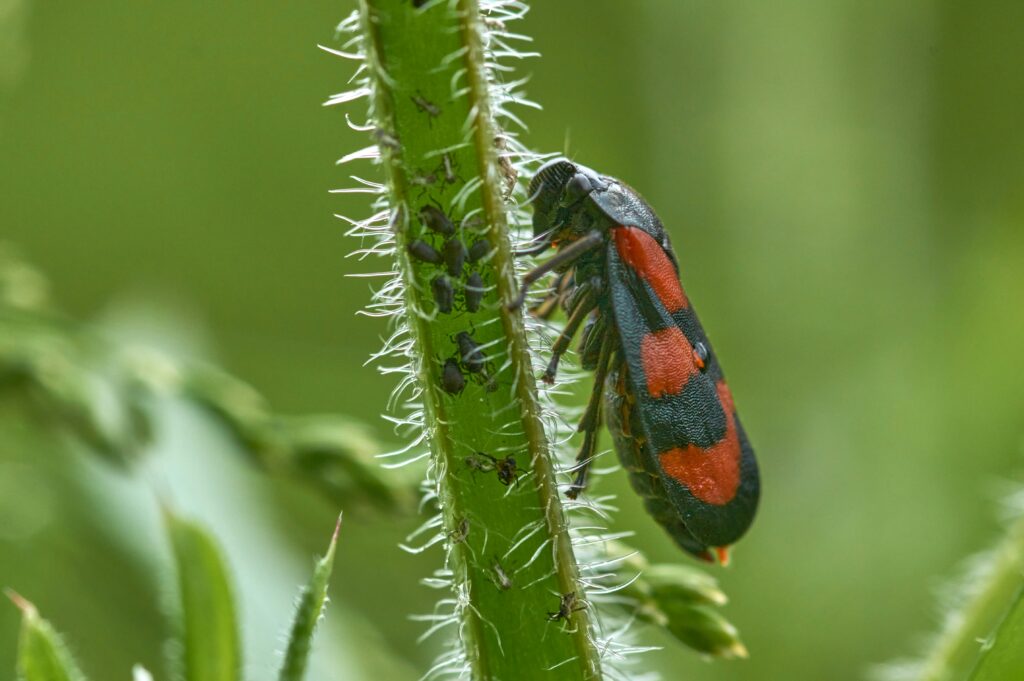
Not all insects in your houseplants spell disaster—many are actually working silently to improve plant health. Soil-dwelling springtails consume decaying plant matter and fungi, helping to prevent mold while returning nutrients to the soil. Beneficial nematodes patrol the soil, hunting for harmful pests like fungus gnat larvae while leaving plant roots untouched. Ladybugs and their larvae are voracious predators of aphids and mealybugs, with a single ladybug capable of consuming up to 5,000 aphids in its lifetime. Perhaps most valuable are predatory mites, microscopic arachnids that target plant-damaging spider mites and thrips while causing no harm to the plants themselves. These natural allies often go unnoticed but play crucial roles in maintaining the health of your indoor garden.
Destructive Pests: The Plant Vampires
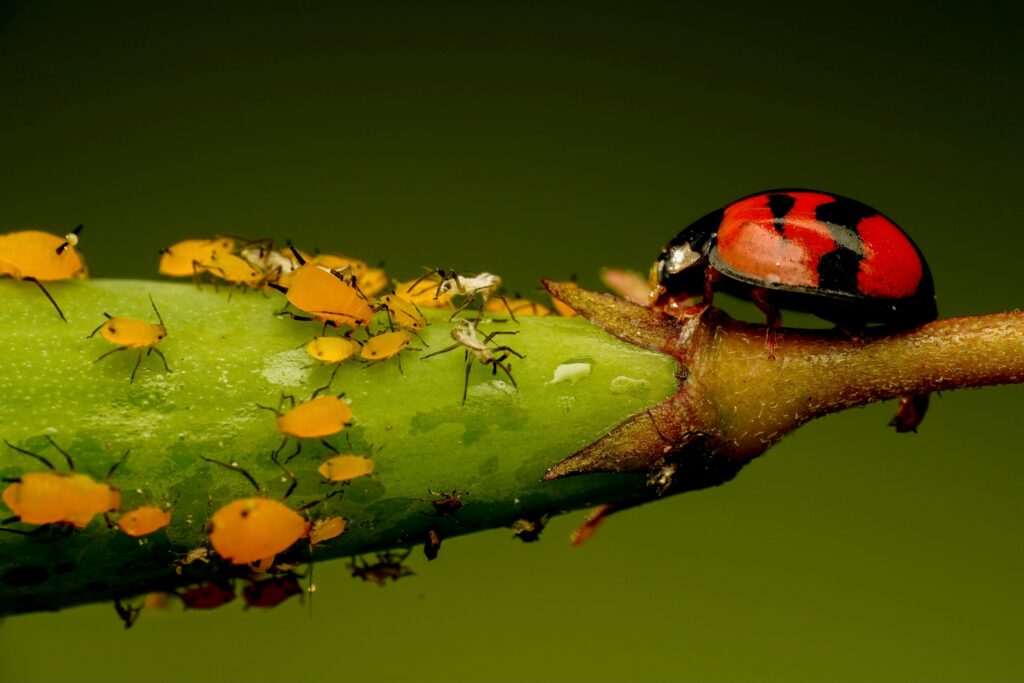
Unlike their beneficial counterparts, some houseplant insects can cause significant damage if left unchecked. Aphids cluster on new growth and stem joints, using needle-like mouthparts to extract sap while simultaneously injecting toxins that distort leaves and stunt growth. Spider mites, barely visible to the naked eye, create fine webbing while feeding on chlorophyll, resulting in stippled yellowing and eventual leaf drop. Scale insects appear as immobile bumps along stems and leaf undersides, attaching themselves permanently to suck plant juices while protected by waxy or armored coverings that resist many treatments. Mealybugs, recognizable by their white cottony appearance, colonize leaf axils and hidden plant crevices, secreting honeydew that promotes sooty mold growth while weakening plants through continuous feeding. These pests reproduce rapidly in the favorable conditions of our homes, making early identification and intervention essential.
The Fungus Gnat Dilemma

Fungus gnats represent one of the most common—and misunderstood—insects encountered by houseplant enthusiasts. These tiny black flies hovering around plants cause minimal direct harm to mature plants as adults, but their larvae live in the soil where they primarily feed on organic matter and fungi. However, when populations grow large, fungus gnat larvae may begin feeding on tender root hairs, particularly in seedlings and young plants where they can cause significant damage. Beyond plant damage, their persistent presence flying around homes creates nuisance value that drives many plant owners to seek solutions. Their presence often indicates overwatering issues, as they require consistently moist conditions to reproduce successfully. Managing fungus gnats typically requires addressing both the adult flies and the soil-dwelling larvae while adjusting watering practices to create less favorable breeding conditions.
Soil Dwellers: The Underground Community
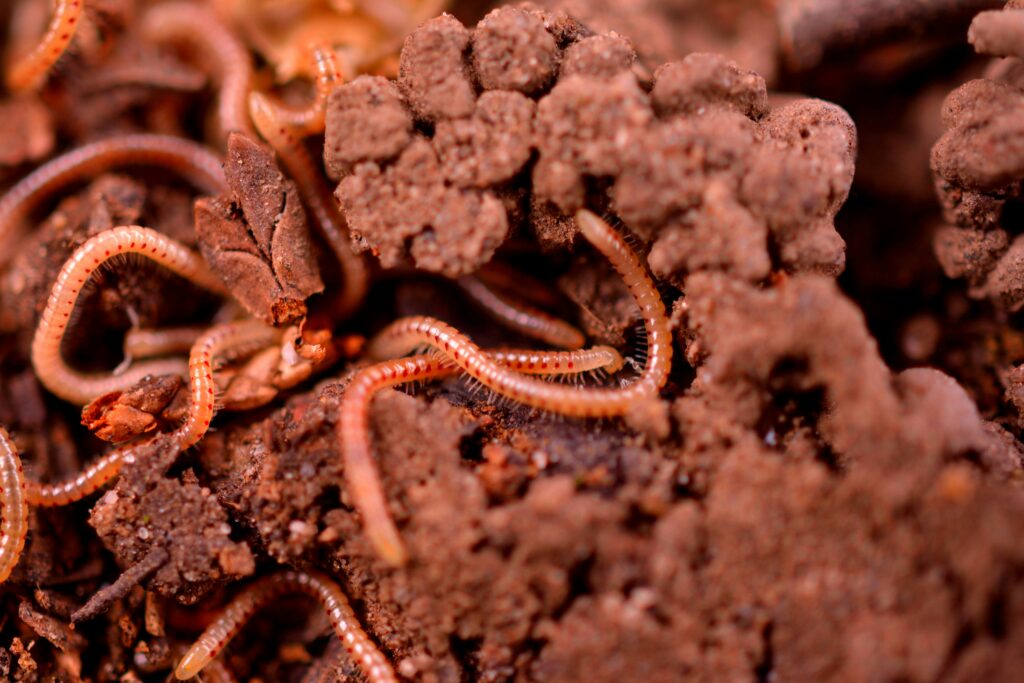
Beneath the surface of your potting soil exists a complex community of organisms largely invisible to casual observation. Beneficial soil arthropods like orbatid mites help break down organic material, improving soil structure and releasing nutrients in forms plants can readily absorb. Earthworms, though less common in houseplants unless introduced, create channels for air and water while producing castings that enrich the growing medium. Soil-dwelling predators such as rove beetles patrol for pest eggs and larvae, providing natural pest management below the surface. Unfortunately, this underground environment can also harbor problematic organisms like root mealybugs, root aphids, and the larvae of various pests that damage plant roots directly. The health of this subterranean ecosystem significantly impacts overall plant vigor, with balanced soil biology generally supporting stronger plant immunity against potential threats.
Identifying Friend from Foe
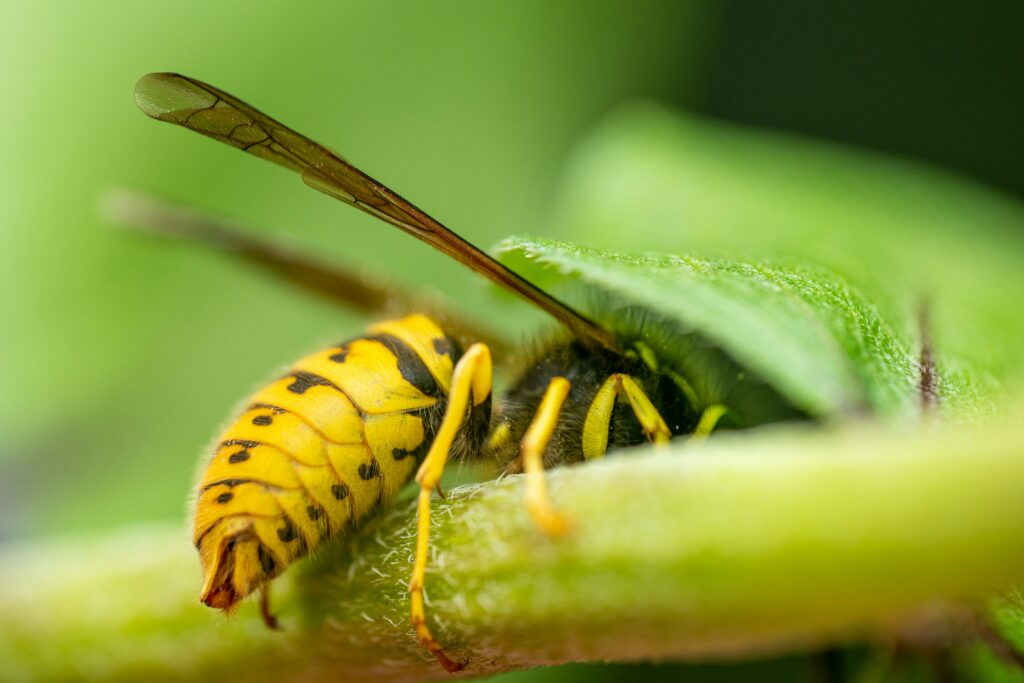
Distinguishing beneficial insects from harmful pests requires close observation and some basic knowledge of common houseplant inhabitants. Beneficial insects typically move quickly and actively hunt other insects, while pests tend to remain relatively stationary while feeding on plant tissues. Color can provide helpful clues—many beneficial insects display bright warning coloration like the red of ladybugs or the iridescent green of certain predatory flies, while pests often blend with plant tissues in muted tones. Location on the plant offers another indicator, as beneficial insects frequently patrol throughout the plant rather than clustering in colonies, which is typical behavior of sap-sucking pests. When in doubt, capturing clear photos of unidentified insects and consulting plant forums or extension services can help determine whether intervention is necessary or if you’re observing a helpful ally at work.
The Honeydew Connection: Ants and Aphids
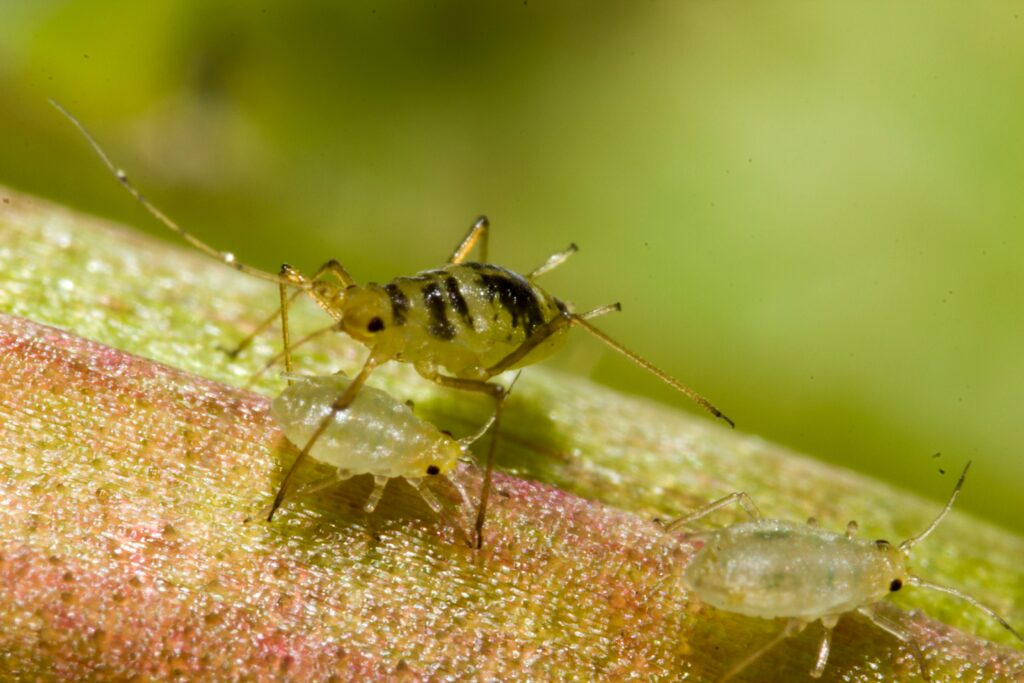
A fascinating but problematic relationship exists between certain plant pests and ants, creating additional challenges for houseplant owners. Sap-feeding insects like aphids, mealybugs, and scale excrete a sugary substance called honeydew as they process large amounts of plant sap to extract sufficient protein. This sweet secretion attracts ants, which then protect and even farm these pests, moving them to new feeding sites and defending them against predators and parasites that might otherwise provide natural control. The presence of ants on houseplants almost always indicates an underlying pest problem requiring attention. Beyond the original pest damage, the honeydew itself creates secondary issues by promoting the growth of sooty mold, a black fungal coating that blocks light from reaching leaf surfaces and reduces photosynthesis. Breaking this partnership requires addressing both the original sap-feeding pests and potentially the ant colonies supporting them.
Natural Predators: Biological Control Indoors

Harnessing natural predator-prey relationships offers an elegant solution to pest problems without chemical interventions. Commercially available beneficial insects can be purchased and released into indoor environments to target specific pest problems. Predatory mites like Phytoseiulus persimilis specifically target spider mites, consuming all life stages while ignoring plant tissues entirely. Parasitic wasps smaller than a grain of rice lay eggs inside aphids and whiteflies, turning pests into hosts for the next generation of beneficial insects. For fungus gnat problems, soil-dwelling predators like Stratiolaelaps scimitus (formerly Hypoaspis miles) hunt larvae in the potting medium, breaking the reproductive cycle. These living pest control solutions require proper timing and conditions but can provide long-term protection with minimal environmental impact. Many commercial growers have transitioned to biocontrol methods even in large greenhouse operations, demonstrating their effectiveness when properly implemented.
Prevention: The First Line of Defense
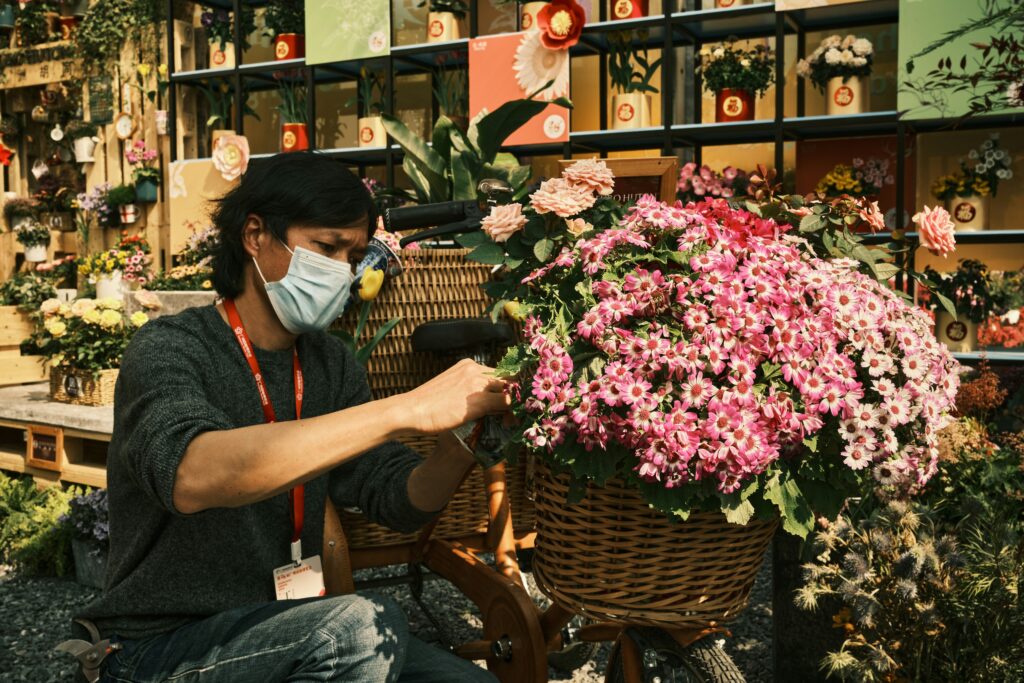
Preventing insect problems begins long before pests appear, with cultural practices that promote plant health while creating conditions less favorable to common invaders. Quarantining new plants for at least two weeks before introducing them to your collection allows time to observe for hitchhiking pests that might otherwise spread rapidly. Proper watering practices—specifically allowing soil to dry appropriately between waterings—significantly reduces conditions favorable to fungus gnats and root rot pathogens that weaken plants and make them more susceptible to pest attack. Regular inspection of plants, particularly examining leaf undersides and stem joints where many pests first establish, enables early detection when control measures are most effective. Using properly sterilized potting media rather than garden soil helps exclude many potential pests and pathogens that might otherwise enter your home environment. These preventative measures require minimal effort but provide substantial protection against the most common houseplant invaders.
Organic Intervention: When and How
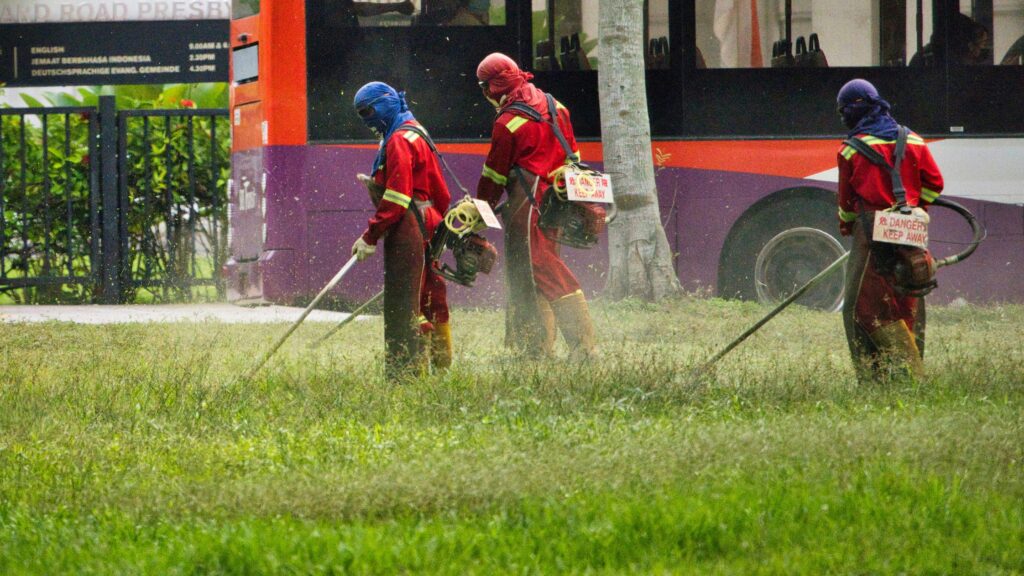
When prevention fails and beneficial insects aren’t providing sufficient control, organic interventions offer effective solutions with minimal environmental impact. Insecticidal soaps work through direct contact, disrupting pest cell membranes while being relatively gentle on beneficial insects and breaking down rapidly after application. Neem oil, derived from the neem tree, acts as both a contact killer and systemic deterrent, interrupting feeding and reproductive cycles of many common pests when applied regularly. Diatomaceous earth, composed of fossilized aquatic organisms, creates microscopic cuts in the exoskeletons of crawling insects, causing dehydration without chemical toxicity. Physical removal methods like water sprays for aphids or alcohol-dipped cotton swabs for mealybugs provide immediate control for localized infestations without leaving residues that might harm beneficial organisms. These organic approaches may require more frequent application than synthetic alternatives but offer effective control while maintaining the health benefits of houseplants.
Chemical Control: Last Resort Options
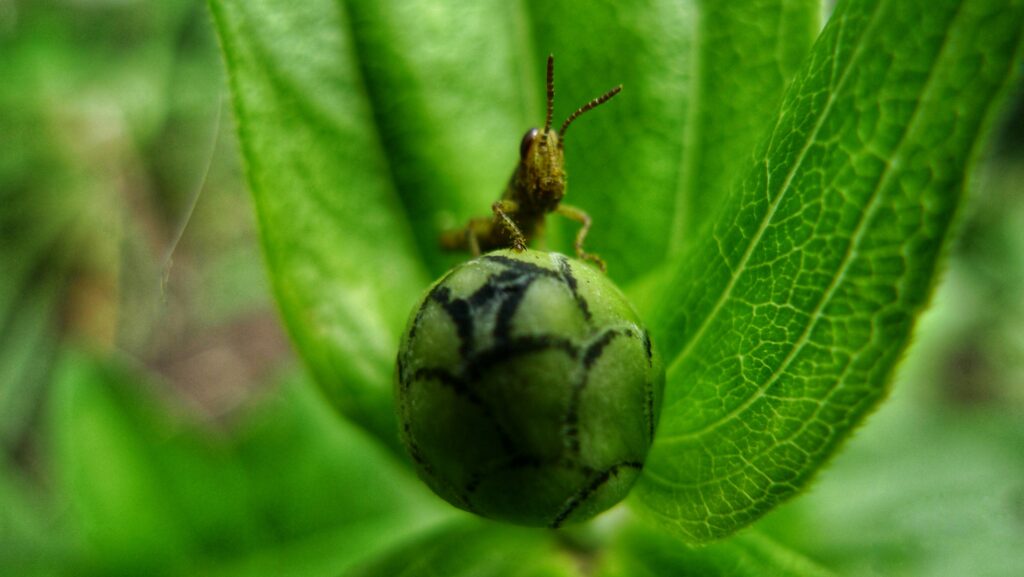
Chemical pesticides represent the most powerful but potentially problematic intervention options for indoor plant pests. Synthetic pesticides often provide rapid knockdown of pest populations but may persist in the environment, potentially affecting beneficial insects, pets, and human residents. Systemic insecticides absorbed by plants offer long-lasting protection against sap-feeding pests but require careful consideration regarding plant species, as some ornamentals may show sensitivity to certain active ingredients. When using any chemical control indoors, proper ventilation becomes crucial to prevent accumulation of volatile compounds that may cause respiratory irritation. Label instructions regarding protective equipment, application rates, and safe re-entry times take on heightened importance in enclosed living spaces compared to outdoor applications. Given these considerations, chemical controls are best reserved for severe infestations where other methods have failed, with preference given to products specifically labeled for indoor use on ornamental plants.
The Ecological Approach: Balance Over Eradication

Modern houseplant care increasingly embraces ecological thinking that aims for balance rather than complete eradication of all insects. Low populations of certain pests may be tolerated if they support beneficial predators that prevent more serious outbreaks. Many experienced plant enthusiasts maintain “banker plants” that host small pest populations specifically to sustain beneficial insects that provide protection for the entire collection. Introducing controlled biodiversity through properly composed potting mixes that include beneficial microorganisms helps create resilient plant systems less susceptible to dramatic pest outbreaks. This ecological approach recognizes that sterile growing environments often prove ultimately unsustainable, as any pest introduction into systems lacking natural controls can spread explosively. By working with natural systems rather than constantly fighting against them, plant enthusiasts can develop more sustainable indoor ecosystems requiring fewer interventions while supporting healthier plants with natural resistance to stress and disease.
When to Seek Professional Help

Despite best efforts at prevention and management, some situations warrant professional intervention for houseplant pest issues. Widespread infestations affecting multiple plant species throughout a home may indicate persistent environmental conditions favoring pests that require comprehensive approaches beyond treating individual plants. Unusual or unidentified pests that don’t respond to common treatments might require expert identification and specialized control strategies not readily available to homeowners. Collections of rare or valuable plants justifying higher investment in protection may benefit from professional consultation regarding preventative programs. Professional pest management services increasingly offer specialized plant health care options that extend beyond conventional pest control, providing integrated approaches that address underlying cultural and environmental factors. When seeking such services, look specifically for providers with demonstrated experience in ornamental plant protection rather than general household pest control, as the approaches and products utilized differ significantly.
The Relationship Between Plant Stress and Pest Susceptibility
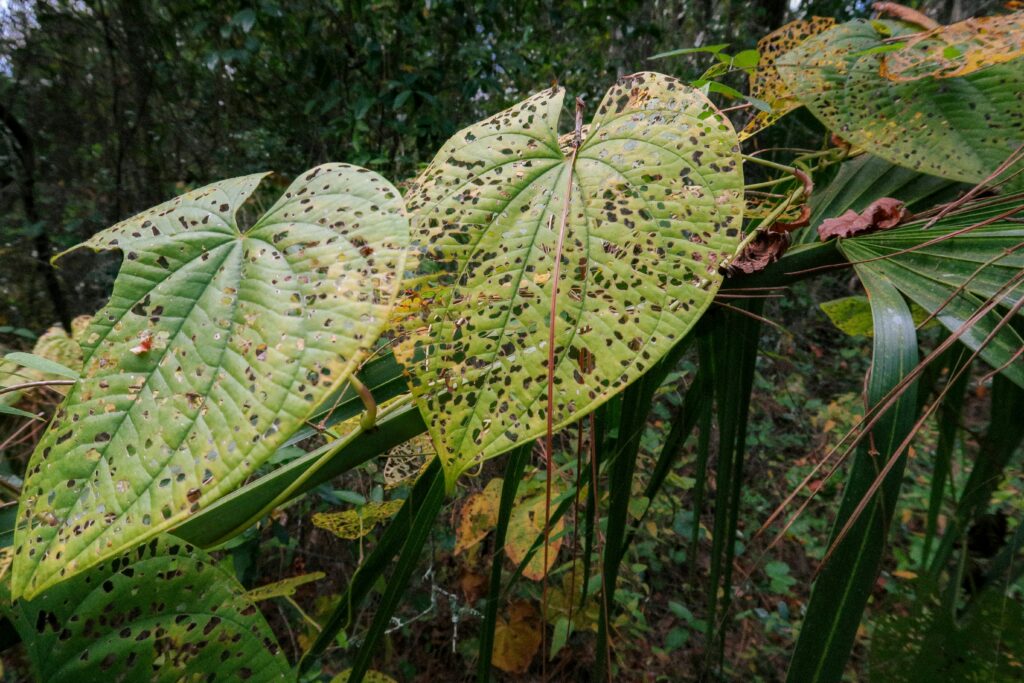
The connection between plant health and pest resistance represents one of the most important yet overlooked aspects of insect management. Plants experiencing stress from improper light, inconsistent watering, nutrient deficiencies, or unsuitable temperatures produce chemical signals detectable by certain pest species that have evolved to target weakened plants. These stressed plants often contain higher concentrations of free amino acids in their sap while producing fewer defensive compounds, essentially becoming more nutritious and less toxic to potential pests. Research demonstrates that properly maintained plants can physically defend themselves by producing thicker cuticle layers, specialized defensive proteins, and complex chemical deterrents that discourage pest feeding and reproduction. This relationship explains why identical plant species in the same room may show dramatically different pest susceptibility based on their individual growing conditions. By addressing underlying stress factors, plant owners not only improve aesthetic qualities but actively enhance their plants’ natural ability to resist insect attack.
Conclusion
The tiny creatures inhabiting our houseplants represent a microcosm of ecological relationships that mirror those in natural environments. Rather than viewing all insects with suspicion, understanding their diverse roles helps us make informed decisions about when to intervene and when to appreciate nature’s balance. By combining preventative measures, careful observation, and graduated responses that begin with the least disruptive options, plant enthusiasts can maintain healthy indoor collections while minimizing chemical use. The occasional aphid or spider mite need not cause panic—with knowledge and appropriate tools, we can manage these challenges while still enjoying the numerous benefits houseplants bring to our indoor environments. Perhaps most importantly, this journey into understanding the insects lurking in our houseplants offers valuable lessons about ecological interconnectedness that extend far beyond our potted companions.

